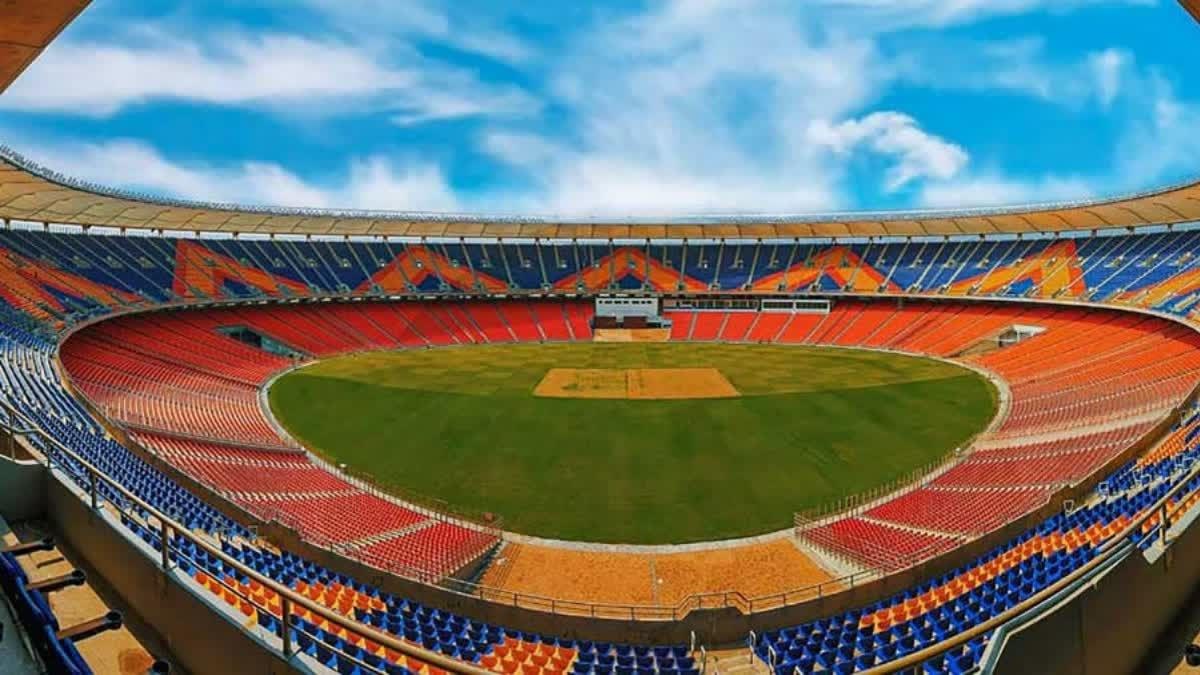Ahmedabad (Gujarat): Motera, the small suburb of Ahmedabad in Gujarat, will be the cynosure of all eyes across the globe when India meets Pakistan in this 1,32,000-capacity bullring, the largest cricketing stadium in the world.
Its bigness of being will complement the occasion that it has engineered – a high-tension match between eternal rivals India and Pakistan, on a hot territory that has long been politically charged and carries more chirp than just about cricket.
Though tension is always high among players when they meet their cross-border competitors, this time, Narendra Modi stadium in Motera will up the ante for both teams – India with the spectre of losing, and Pakistan with the fear of playing India in Gujarat for the first time in a long while, that too with 1,32,000 spectators breaking the sound barrier, mostly in support of the hosts.
Then there is the security nightmare which has been keeping the entire police department on its toes. Managing 1,32,000 spectators charged to their gills and chanting for India in the largest sports stadium in the world may be that perfect point to showcase the World Cup. But, on a more realistic level, the thriller will be fraught with possibilities.
Before the Modi eye came on to this sporting facility, Motera was, much like Multan, known to be a heat and dust speck on the venue map of cricket, with possibly the most uncomfortable press box in India, if Delhi press box’s odd positioning is ignored. However, the milestones have been degrees higher here.
It has sported big occasions right from that hot and dusty day on March 7, 1987, when Sunil Gavaskar became the first batsman to breach the 10,000-Test run mark at this venue, then called the 'Sardar Patel Stadium'. This was a feat that no great, not even Don Bradman, had reached.
The poetic beauty was that Gavaskar scored those reality-altering runs against arch-rivals Pakistan who, incidentally, had India in a corner with 395 runs scored. Kapil Dev, too, has a 1994 Motera feather in his cap. It was here that he surpassed Sir Richard Hadlee’s long-held record of being the highest wicket-taker in Test cricket. It was here that he took his 432nd scalp as an equal number of balloons went up into the sky and spectators stood and clapped for five minutes on the trot.
